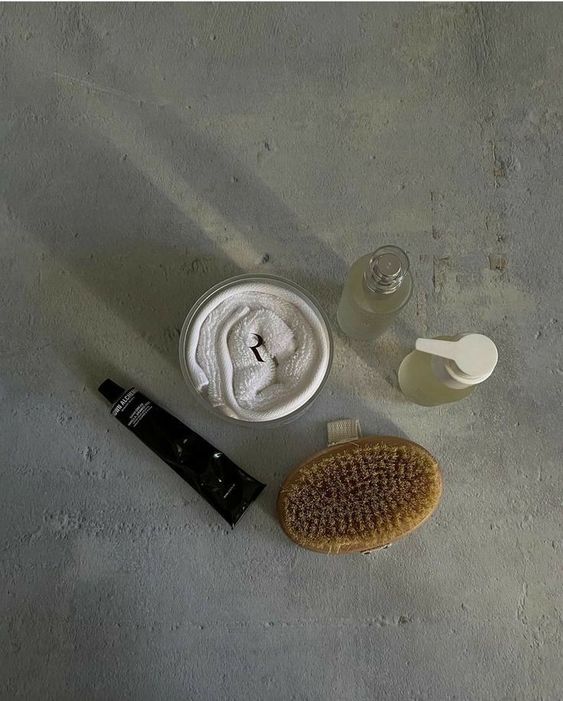
Have you ever walked through the city and wondered how all the pollution around you can affect your skin? Well, we've got the answers for you! Take a look at what pollution actually is, the aftermath of pollution on your skin, and how to take back control of your skin's appearance and overall health.
The Clear and Concise Definition of Pollution
Pollution involves any biological, chemical, or physical factor that contaminates the environment, indoors or outdoors, and alters the natural properties of the atmosphere[1]. Particulate matter, carbon monoxide, ozone, nitrogen dioxide, and sulfur dioxide are considered the major contaminants and a threat to public health[1]. Pollution, particularly
air pollution
has been linked to respiratory ailments and other conditions, as well as represents a significant source of morbidity and mortality for humans and other living
things[1]. A whopping figure of seven million people die yearly as a result of pollution around the world. Many of us are familiarized with the harmful effects of pollution on our health; however, it also produces severe damage at the skin level. Since we have thoroughly addressed the negative impact of topical contaminants, dirty ingredients banned on Clean Beauty formulas, on our website, we decided to dedicate this blog post to
air pollutants
.Let's see what the main airborne compounds are that wreak havoc on our skin health.
Unfriendly Skin Pollutants: What Are They Really?
[2][3]-
Carbon monoxide (gas)
Generated by fossil‐fuel combustion and vehicle emission. -
Heavy metals
Such as arsenic, cadmium, lead, nickel. They are present in aircraft, batteries, casting, fuel, industrial facilities, paint, plumbing material, televisions, welding, etc. -
Nitrogen dioxide (gas)
Formed by fuel combustion, vehicle emissions, waste incineration and wood burning. -
Ozone (gas)
Created by the interaction of nitrogen oxide and volatile organic compounds when exposed to UV photoactivation. -
Particulate matter (PM)
These are particles with an average diameter of < 2.5 μm, skin pores diameter is 5–10 μm, and are formed during cooking, fires, fossil-fuel combustion, waste degradation/incineration, road dust production, vehicle emissions, etc. -
Persistent organic compounds
Like dioxins and polychlorinated biphenyls. They are present in fires, herbicides, industrial processes, pesticides, volcanic eruptions, etc. -
Polyaromatic hydrocarbons (PAHs)
They are part of cigarette smoke, charred meats, combustion of organic material, asphalt roads fumes, vehicle emissions, volcanic eruptions, etc. Examples: acenaphthene, acenaphthylene, fluoranthene, fluorene, naphthalene, and pyrene. -
Semivolatile organic compounds (SVOCs)
They can be found in antimicrobial agents, fragrances, furniture, and solvents. Examples: butylated hydroxytoluene (BHT), nicotine, parabens, etc. -
Sulphur dioxide (gas)
Produced by electric utilities, fuel combustion, industrial facilities, maritime transport, vehicle emissions and volcanoes. -
Volatile organic compounds (VOCs)
They are present in aircraft emissions, cigarette smoke, household products, paints, varnishes, etc. Examples: formaldehyde, hexane, and toluene.
The Aftermath on Your Skin: Pollutants Contact
[2][4] [5] [6]Sheer and absolute chaos is the best way to describe the deleterious effect of pollution on our lovely skin. To start with, our skin microbiota changes for the worse as the bad guys (pathogenic bacteria) will be able to outnumber the good guys (friendly flora). Yes, pollution promotes an environment where unfriendly germs can thrive. This is particularly true for the Staphylococcus spp. and Streptococcus spp. strains.
It is a well-known fact that pollution dramatically increases the production of free radicals. In this case, we are talking about the ultra-damaging reactive oxygen species (ROS) which will mop up the antioxidants at both the superficial and deeper layers of the skin, glutathione, vitamin C, etc.. They are actually capable of inhibiting the AhR receptor and antioxidant enzymes, catalase, glutathione peroxidase, superoxide dismutase, etc., that counteract the function of pollutants thus leading to a state of oxidative stress and inflammation. ROS the levels of oxygen and vital nutrients delivered to the cells as well as the microcirculation function that takes place within the blood vessels.
The ubiquitous presence of pollutants causes an over secretion of skin sebum and the oxidation of its lipids. The result is a sebum with a lower concentration of cholesterol, squalane and vitamin E that can be perceived as an imbalance of the skin barrier. Oils are not the only components to undergo oxidation, as proteins suffer the same fate. These changes are responsible for disturbance of the pH of the skin, with higher than usual levels of lactic acid. When it comes to acids, an excess equals skin irritation.
Comparative studies have shown that people that live in big cities or industrial areas experience an accelerated rate of aging, collagen breakdown and uneven skin tone (20% more pigment) than those who are based in rural zones. Last, but not least, let's remember that the PA (Particulate Matter) can potentially clog pores due to their super small size. These phenomena can be observed as follows:
- Acne
- Eczema
- Sensitivity
- Irritation
- Dehydration
- Skin allergies
- Severe dryness
- Dull skin
- Skin cancer
- Hyperpigmentations
- Wrinkles
- Loss of elasticity
- Premature aging
- Thread veins
- Atopic dermatitis
- Less protection against UV light
- Hyperseborrhea (in those who are prone to oiliness)
- Exacerbation of rosacea signs and symptoms (and any other inflammatory skin disease)
Take Back Control of Your Skin's Appearance
-
Double cleanse
First with an oil-based cleanser and then followed by a micellar, foaming, milky or creamy one. Do this at night because that is the time of the day where more impurities would have accumulated on the surface of the skin. In the morning use only one gentle cleanser. This protocol will ensure maximum removal of debris, especially the PA. -
Exfoliate
Most pollutants are really hard to detox, and some extra help is needed to leave the skin “squeaky clean” of obnoxious materials. That extra help comes in the form of exfoliation 2-3 times per week, provided your skin can tolerate it. If your complexion is super sensitive you might need to start with 1 weekly exfoliation and then work up the number of applications. Exfoliation should be completely avoided in infectious or inflammatory conditions. We recommend exfoliants that contain clays and/or charcoal as the pollutants adhere to their surface in order to be easily wiped. Other lovely exfoliating actives are malachite, gentle acids (gluconolactone, lactobionic acid, etc.) and fruit enzymes. -
Treat yourself to a face mask
Do this once per week with formulas that contain an explosion of antioxidants like berries, cacao, grapes, green/white teas, pomegranate, etc. Make sure you apply the mask after you have exfoliated the skin for an optimum absorption of potent nutrients. -
Counteract the nasty skin pollutants
For daily neutralization of toxins, we suggest layering a serum or a facial oil that contains algae, dandelion, ginkgo biloba, coenzyme Q10, astaxanthin, stable forms of vitamin C, rosehip oil, etc. Do this both day and night. -
Moisturize
In order to prevent transepidermal water loss or replenish the lost oils that are depleted by pollution, do not forget to moisturize daily. Ceramides, vegetable butters, hyaluronic acid, niacinamide, tremella mushroom and cold-pressed oils are amongst the ingredients you should be looking for. -
Protect
Incorporate prebiotics (plant sugars like alpha-glucan and inulin), probiotics (bacterial strains) and postbiotics (by products of probiotics metabolism such as lactic acid and peptides) into your skincare regime. These can be present in serums, creams, masks, etc. Diligently apply a sunscreen infused with minerals (titanium dioxide and zinc oxide) every two hours. When you create a film on the outermost layer of the skin, it is harder for pollution particles to penetrate. -
Go toxic-free
The cosmetic industry is poorly regulated, and it is very common to find obnoxious ingredients in cleansers, lotions, moisturizers, etc. It would make no sense to smother them on our skin if our goal is to minimize the amount of pollution that we are exposed to. Mineral oil, paraffin, parabens, propylene glycol, silicones, sodium lauryl sulfate and many other chemicals should not have a place in a healthy skincare routine. Favor clean brands like ROSAFA if you really want to achieve a glowy complexion. -
Other measures
Drink whenever thirsty and eat organic foods (when possible). Consume plenty of veggies, fruits, nuts & seeds, algae, whole grains (gluten-free), legumes, free-range eggs, and grass-fed meats (for those who are not vegan or vegetarian). Some supplements like beta-carotene, holy basil, milk thistle, omega-3 fatty acids, vitamin C & D, mushrooms, and glutathione can potentiate your natural protection against pollutants. It is important, though, that these are prescribed by a knowledgeable health practitioner. For those who live in highly polluted cities, it will be worth investing in an air filter for your home and car (HEPA + activated carbon filter).
Anti-pollution Skincare: What Are The Facts?
[7]Even though some cosmetic companies are able to substantiate their anti-pollution claims via in vivo and in vitro tests, no standardized testing methods have been approved for this purpose. There is also a lack of consensus when it comes to the biomarkers that should be tested. And even if there was a general agreement, the technology to accurately measure certain pollutants is still not available. Spending hundreds of dollars on anti-pollution skincare doesn't necessarily guarantee better protection against its damaging effects. Just make wise purchases based on the ingredients that those formulas contain (and even do not contain).
Now that you have a clear idea of what pollution is and how it can affect your skin's health, make sure to follow our guide on how to take better care of your skin. To learn more about the latest trends related to skincare, make sure to follow us on Instagram, Facebook, Pinterest, and Linkedin.
References
[1] https://www.who.int/health-topics/air-pollution#tab=tab_
[2] https://www.ncbi.nlm.nih.gov/pmc/articles/PMC6766865/
[3] https://www.ncbi.nlm.nih.gov/pmc/articles/PMC4337418/
[4] https://www.mdpi.com/2079-9284/5/1/4
[5] https://www.dermatologytimes.com/view/pollution-stress-take-toll-skin-aging
[6] https://pubmed.ncbi.nlm.nih.gov/20664556/
[7] https://www.cosmeticsbusiness.com/news/article_page/Substantiation_of_anti-pollution_claims/170840




